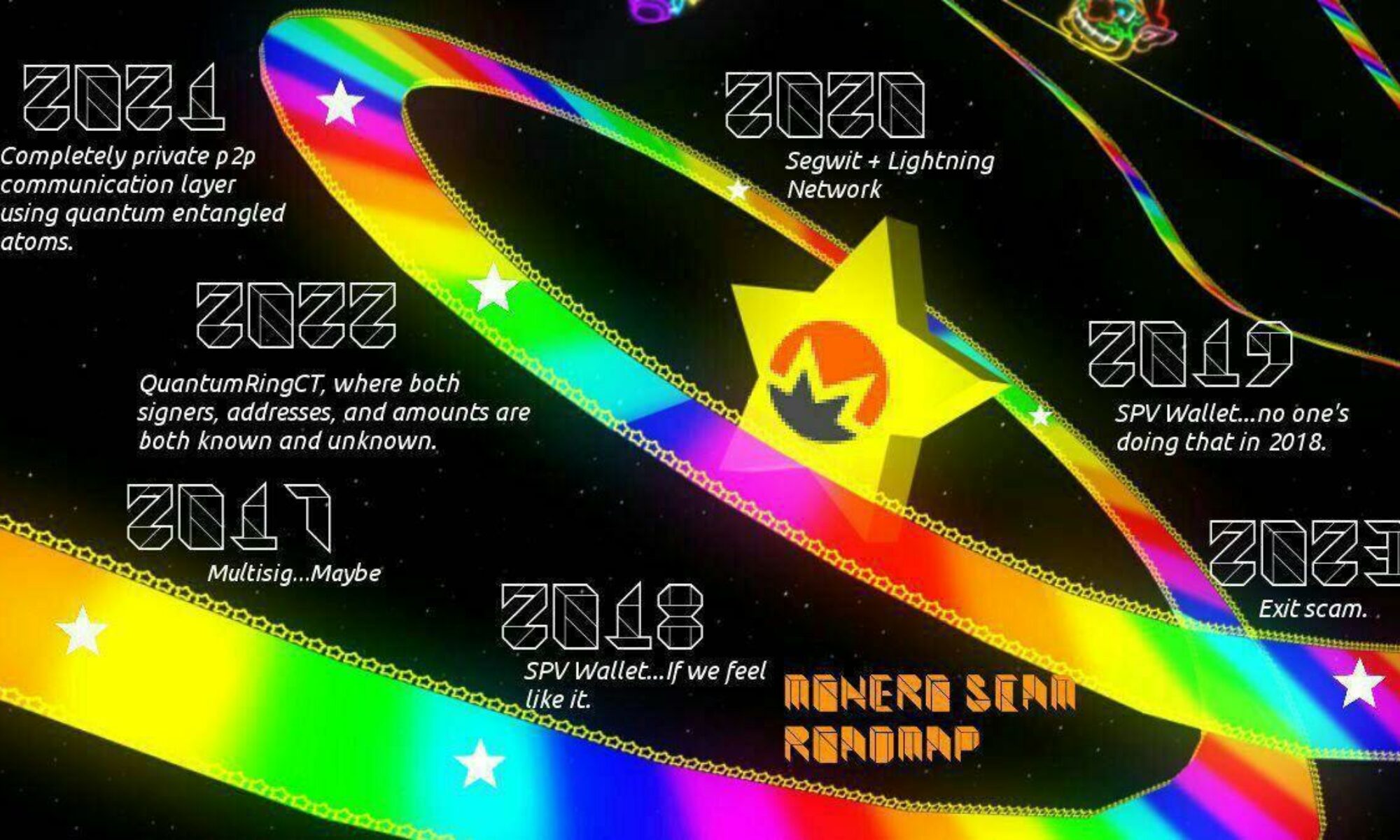
New Developments Happening in the Blockchain Space: 17-04-2024

Image Source: Pixabay
Is BitVM the Holy Grail of Bitcoin? It’s Complicated, Developers Say
Trust-minimized Bitcoin bridges using BitVM can work, but it may take a while for users to get their funds out.
A once-vaunted scaling innovation for Bitcoin may be much more limited in practice than its early proponents once claimed, according to developers.
Since its introduction in October, BitVM—described as a “computing paradigm” to express smart contracts on Bitcoin—has been pitched as a potential way to bridge BTC to other blockchains in a truly decentralized manner. If so, it could unlock a world of applications for BTC holders that are currently exclusive to other chains, including privacy, scalability, and dApps.
However, such bridges will introduce a key limitation that critics claim the technology’s supporters have been elusive about. Read More
How DePINs are connecting farmers and businesses via blockchain
With more than 160,000 farmers already onboarded in Indonesia and Colombia, Farmsent taps the Peaq blockchain as its layer-1 backbone to revolutionize the global food commodity trade.
In a bid to revolutionize the global food commodity trade and empower farmers, farmer-centric blockchain Farmsent has revealed a new partnership with the layer-1 decentralized physical infrastructure network (DePIN)-focused blockchain, Peaq.
The collaboration, announced on April 9, marks a step forward in Farmsent’s goal of decentralizing the agricultural supply chain to enhance transparency in the global food trade and build a global Web3 marketplace that connects farmers directly with consumer-facing businesses worldwide.
By leveraging a DePIN of sensors to track product quality and provenance, Farmsent claims it can eliminate centralized intermediaries and reduce costs for all stakeholders, all while ensuring transparency across the supply chain. Read More
Decentralized science (DeSci), explained
Decentralized Science (DeSci), within the framework of Web3, is a paradigm shift in scientific research characterized by four fundamental principles: incentives, transparency, decentralization and cooperation.
The shift from centralized institutions, where a small number of entities control the majority of the power, to distributed networks, where participants share the majority of the authority, is known as decentralization. This change lessens the power of gatekeepers and increases inclusivity by democratizing access to resources and decision-making.
DeSci places a strong emphasis on transparency, supporting free and open access to methodology, data and conclusions. DeSci fosters an environment of openness and accountability by encouraging transparency, which makes scientific research more reproducible and trustworthy. Read More
dYdX Community Votes to Stake $61M in DYDX Tokens for Enhanced Security
The dYdX community overwhelmingly approved a proposal to stake 20 million DYDX tokens with Stride to boost the protocol's security as DEX activities rise.
The decentralized exchange (DEX) ecosystem has witnessed a marked increase in trading activity, driving the dYdX community to take strategic measures to enhance platform security and integrity. In a recent governance vote, the community has approved a proposal to stake 20 million DYDX tokens, the platform's native cryptocurrency, through the liquid staking protocol Stride.
The decision was made with an impressive majority, with 91.7% of the votes cast in favour of the staking initiative. The staked tokens, valued at over $61 million at the time of the decision, are intended to bolster the security of the protocol's network. This move comes in response to concerns over the plateauing rate of DYDX being staked to validators, coupled with a substantial uptick in trading activity on dYdX.
The integration with Stride presents a notable advancement for the dYdX community. Liquid staking protocols like Stride enable users to stake their cryptocurrency assets to network validators, who, in turn, help secure the blockchain and process transactions. In exchange, stakers earn rewards, often in the form of interest on their staked amount. Read More
How To Increase Your Sphere Of Influence In Markethive

We have a lot to be grateful for within Markethive. It’s like stepping out of the rat race into an oasis of humanity at its best. As an inbound marketing, business-based blockchain platform with an inherent entrepreneurial spirit, we have all the tools to get our message out to the whole world. We have a social media interface with a collaborative ethos rarely experienced on legacy social media.
We are starting to see new integrations in the blogging section in preparation for the customized, more intuitive interface and dashboard of Markethive and, of course, the Markethive Wallet that will facilitate the Merchant accounts for members as well as personal transactions, the Vault, etc.
The new-look Blogcasting Hub is located at the top of all blogs in the system. Blogcasting is a term introduced by Markethive and is an enhanced broadcasting system. In the traditional broadcasting sense, only the people who physically subscribe to your blog or newsletter are usually notified of your updates via email.
With this blogcasting system, your social networks are informed of your blog as and when you publish them. What this means is the potential reach is into the millions. Read More
OKX Announces Listing of Tensor (TNSR) for Spot Trading
Leading cryptocurrency exchange OKX has revealed its plans to list Tensor (TNSR) on its spot trading market. The listing will commence on April 8, 2024, with TNSR deposits opening in the morning and spot trading launching in the afternoon. Tensor Protocol, built on the Solana blockchain, serves as a smart contract-based autonomous protocol, facilitating seamless connections between NFT marketplaces and users. Traders are advised to conduct independent research and evaluate risk before engaging in digital asset trading.
OKX, a prominent cryptocurrency exchange, has recently unveiled its decision to include Tensor (TNSR) on its spot trading market, as per an official announcement on April 8, 2024. The exchange has provided a detailed schedule for the TNSR trading activities:
TNSR deposits will be open for users to make at 4:00 am UTC on April 8, 2024.
Tensor Protocol, which operates on the Solana blockchain, is an autonomous protocol based on smart contracts. Its primary objective is to establish seamless connections between NFT marketplaces and their respective users, enabling efficient interaction among collectors, buyers, and sellers. Read More
Solana validators pass ‘Timely Vote Credits’ plan to speed up transactions
Solana’s validators voted 98% in favor of a proposal that could speed up transaction confirmation times.
Solana validators have voted in a proposal aimed at decreasing the latency of consensus “votes” — which could speed up transactions on the blockchain.
The proposal calls for a “Timely Vote Credits” mechanism on Solana and was passed on April 9 with 98% votes in favor.
It would change how validators are incentivized to make “votes” — a key part of Solana’s consensus mechanism that confirms transactions.
According to Solana Labs, up until now, validators are given a flat one vote credit whenever they submit a consensus vote on a block that becomes finalized by the network.
Over time, validators have found they can maximize earnings by delaying their votes just long enough to ensure they’re voting on the correct fork — at no penalty. Read More
Restaking protocol EigenLayer partially launches on Ethereum mainnet
EigenLayer is live on the Ethereum mainnet, but several crucial features are still on the way “later this year.”
Ethereum restaking protocol EigenLayer, which touts over $13 billion in assets, has launched onto the blockchain’s mainnet, but some key features are still to come and will go live sometime in 2024.
EigenLayer announced the launch in an April 9 blog post but added in-protocol payments to operators from actively validated services (AVS), such as apps and cross-chain bridges, are yet to come.
A mechanism called slashing — when validators get their staked crypto taken from them if they don’t do their job correctly — is also still on the way.
Both will come “later this year” after the EigenLayer marketplace has time to “develop and stabilize,” the protocol said, without disclosing a timeline. Read More
What is censorship resistance in blockchain technology?
The ability of a system, usually a communication or information distribution network, to resist attempts to censor, alter or stop the flow of information is known as censorship resistance.
Within the realm of digital technology, it frequently alludes to decentralized systems that function without a central authority or control, such as encrypted communication tools, social networking platforms or cryptocurrency systems. These systems ensure the free flow of information even in the face of censorship attempts by spreading control among numerous participants and encrypting conversations.
Systems that are resistant to censorship are essential for maintaining the right to free speech, providing information access in repressive governments, and encouraging creativity by guarding against arbitrary limitations on expression and communication. In the digital age, they are a potent weapon for advancing democracy, human rights and the free flow of ideas. Read More
Disclaimer: These articles are provided for informational purposes only. They are not offered or intended to be used as legal, tax, investment, financial, or any other advice.
Thanks for visiting.


